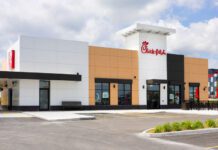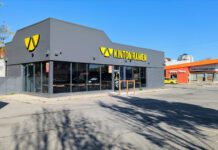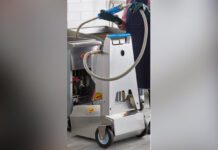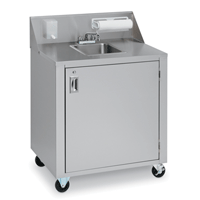In today’s fast-paced world, foodservice operators are looking for equipment that saves energy, time and space
Today’s foodservice operators are counting every penny, tracking every kilowatt of energy and struggling with frequent staff turnover and labour shortages, which means the right equipment choices are more critical than ever.
So, it’s little surprise that efficiency is a word that keeps surfacing in conversations with industry insiders when discussing this year’s equipment trends. “Everything in equipment choices is about efficiency,” says Phil Beauvais, sales development manager for Hobart Canada. “It’s not just energy efficiency but also products with smaller footprints that can improve production capacity and offer more functionality.”
Even older technologies from Europe are being transformed to increase efficiency as restaurateurs become increasingly interested in energy and space-saving devices such as sous-vide systems and induction cookers. Meanwhile, multi-functional appliances, such as combi-ovens, are freeing up space, while modularity is keeping tools practical and flexible.
“From an operator standpoint, standard kitchens are not what they used to be,” says Tom Bornhorst, dean of the School of Hospitality and Tourism for SAIT in Calgary. “Charbroilers, ranges and convention ovens used to be standard. Nowadays, footprint and menu styles are determining what you purchase. Value and flexibility have become huge factors in kitchen design.”
Product consistency, training and food-safety concerns are also being addressed with built-in electronic wizardry. Programmable ovens, for example, enable one-touch cooking to guarantee the quality and consistency of the most complex recipe, while keeping labour costs in check. Temperature monitoring and control systems also help operators meet health- and food-safety requirements for hot and cold food. Built-in alarms even alert the user when it’s time to clean a dishwasher, which means restaurant staff can operate at optimum capacity.
Space—time continuum
Nowadays space and time come at a premium. “Everyone has finite capital, and footprints in kitchens aren’t getting any bigger,” says Bornhorst. “A lot of restaurants don’t have 5,000 sq. ft. of space to play in. They might have 1,000, so maximum usage of equipment is essential.”
It’s why combi-ovens have become a must-have, as operators try to reduce the amount of space needed for kitchen equipment. “Combis are very popular,” says Humber College’s program coordinator, chef James Bodanis. “Products from Rational and Alto-Shaam are great for large quantity cooking. They also reduce shrinkage and provide better yields. Those kinds of benefits are helpful as restaurants try to reduce costs and labour.”
Newer combi-ovens also feature barcode scanners that can be programmed for time and temperature. And the latest hybrid convection ovens, which are fully programmable to ensure product consistency, offer improved airflow for more even cooking.
Many chefs also consider sous-vide immersion circulators a must-have. “Sous-vide is really the future in terms of quality of product, consistency and yield,” says Bodanis. It’s not too expensive either, because you just need an immersion circulator, which starts between $400 and $500.”
Switching gears, the newest blast freezers and chillers can improve efficiency by quickly reducing the temperature of products; some can even be programmed to maintain specific temperatures, humidity and air speed. A good example of one such system is the Irinox Multi Fresh, which received the Kitchen Innovation Award at this year’s NRA Show for small- to medium-sized operations.
And, with greening top of mind for many, organic waste-management systems continue to be popular since they shrink compostable waste down to create a more lightweight end-product that requires less room, while reducing haulage requirements and costs.
Inductive reasoning
When it comes to speed and effectiveness, operators are giving induction two thumbs up. “I’ve seen restaurants running with just two induction units,” SAIT’s Bornhorst recalls. “The footprint is so small, but it’s amazing how much you can produce with one versus two or three other types [of cooking systems].”
Alister Mathieson, dean of the School of Hospitality, Recreation and Tourism at Humber College in Toronto, agrees, explaining that induction was a key investment in the renovation of the school’s teaching facilities. “Although the capital cost is 18 per cent higher than normal gas installations, the payback through energy savings can be realized in 18 months, because induction units can be thermostatically controlled according to your settings. They’re much more energy efficient.”
And, the popular technology is always improving, too. Jim Witt, president of Tarrison Products Ltd. in Oakville, Ont., is already buzzing about new developments in induction. “There are some real trends driving both front- and back-of-the-house,” he explains. “Newer lines work with any type of cookware, except aluminum-based, so you don’t have to spend $1,500 on new pots and pans.”
Taking it a step further, Tarrison will soon launch a battery system for induction to eliminate the need for electrical outlets for banquet or other mobile-cooking applications.
Moving with the times
Modularity is also becoming essential for optimizing space and functionality. It’s especially important at Humber where every piece of equipment is mobile, explains Mathieson. “Portability is really critical from both a cost perspective and a logistics one. If it doesn’t come on wheels, we put it on wheels ourselves. With kitchens having to be multi-purpose, stationary equipment is just an inefficient use of space.”
Additionally, Mathieson explains that quick-release valves are now being built into some kitchen equipment to make it easier to move — whether it’s part of a redesign or simply to clean in hard-to-reach areas.
New cooking units even allow a “lego block” approach, where owners can change out convection or standard oven-top sections, such as burners and griddles, to fit menu requirements. “Operators can change their menus, reduce waste and extend the life of the equipment,” explains Hobart’s Beauvais.
Powering down
It comes as no surprise that energy-conscious operators continue to scrutinize their power consumption when making equipment choices, which is why heat-recovery systems are rising to the top of many wish lists.
“A big factor that’s coming to light in our equipment choices is utility expenditures,” confirms Kirk Burney, director of projects and facilities for Moxie’s Classic Grill/CHOP/Shark Club in Calgary. To that end, the company is looking into heat recovery for kitchen exhaust systems.
Warewashing units offer significant potential for heat recovery, too, Beauvais points out. New ventless systems not only save space and energy they also allow operators to run them on cold water after the initial fill. According to Beauvais, the cost savings — taking into account the hardware and operating costs — can range from $1,500 to $7,000 per unit.
Intelligent thinking
“Food safety is becoming huge right now and holding temperatures are more and more of an issue,” says SAIT’s Bornhorst. “Companies like Rational not only provide logs and digitized readings; newer models even have built-in printers. That way, if inspectors come through, we have the documentation to show them.”
New gadgetry uses a lot more visuals when it comes to operating equipment, he adds. “Even if someone isn’t a chef, they could cook a perfect steak every time. You just set up the codes in the combi-oven, for example, and even download updates from the manufacturer. The same goes for deep fryers.”
The beauty of this software is it eliminates the need for constant upgrades and servicing. Users can simply download what they need to the system. “We’ve seen this kind of thing in manufacturing for a long time,” Bornhorst says. “Now it’s being incorporated more and more into kitchen equipment. In the end, it’s about precision, acceleration and maintaining a great quality product.”
Maintaining a good front
Nearly every expert agrees it’s extremely important to buy equipment that can be easily serviced. Yet it appears to be one area often overlooked, notes Bornhorst. “You might love a bright, shiny new object, but if there’s no service in the area, or it takes six months to get a part, that’s a problem.”
Infrastructure requirements can also come into play. For example, a combi-oven may require a water run, or infrastructure wiring might need to be changed. Ultimately, it could mean spending three times as much as the equipment itself. Maintenance contracts and warranties also need to be closely scrutinized to avoid spending exorbitant service fees during the product’s lifetime.
“The most important thing is doing your due diligence,” Moxie’s Burney suggests. “We really dig into every single piece brought to us because we want to make sure we don’t have to change it in two years. We buy equipment for the long-term.”
Not a bad plan considering an operator’s growing need to keep up with the fast-paced environment we’ve all come to expect.





















